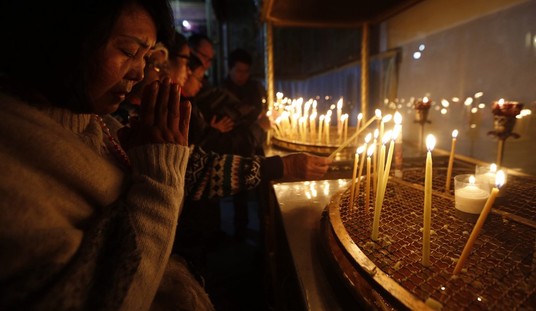I’d like to apologize to readers for failing to realize that a link in the previous article was to a satire piece. It’s getting harder to spot them, but just as an aging man has to try to walk each day or never walk again, the effort must be made, even though you’ll lose in the end. I’ll try harder next time.
While we’re on the subject of knowledge gaps, Micah Zenko of the Council of Foreign Relations notes that the CIA never measured the effectiveness of their covert programs. Take interrogation. A memorandum by the CIA dated June 27, 2013 — but only released today — responds to “the SSCI’s conclusion that the ‘CIA never conducted its own comprehensive analysis of the effectiveness of the CIA’s enhanced interrogation techniques’”. (emphasis mine)
We agree with Conclusion 10 in full. It underpins the most important lesson that we have drawn from The Study: CIA needs to develop the structure, expertise, and methodologies required to more objectively and systematically evaluate the effectiveness of our covert actions.
We draw this lesson going forward fully aware of how difficult it can be to measure the impact of a particular action or set of actions on an outcome in a real-world setting.
Zenko concludes that “therefore, the CIA admitted that — as late as June 2013 — it was simply incapable of evaluating the effectiveness of its covert activities.” They just kept doing the same old covert things without knowing how well, or even if they were accomplishing their goals. Zenko’s main point comes next:
this also directly implies that the CIA lacks the ability to adequately evaluate its much larger, more lethal, and more consequential covert program: its role as the lead executive agency for drone strikes in Pakistan, and many of those in Yemen. … Based upon the best publicly available information, the CIA has killed an estimated 3,500 people in non-battlefield drone strikes since the program began on November 3, 2002 …
I have spoken with former and current National Counterterrorism Center (NCTC) officials and analysts, who have always been uneasy with having CIA analysts evaluate CIA covert programs.
Specifically, they claim that — compared to the NCTC’s own analysis—CIA analysts are more likely to discount claims of collateral damage and the thesis that drone strikes creates blowback in the form of enhancing terrorist recruitment. …
If the 119 detainees who entered the rendition and interrogation program — 26 of whom were wrongly detained — deserve a public accounting, then don’t the 3,500 who have been killed deserve this as well? Or, is the United States simply more comfortable with torturing suspected terrorists than killing thirty times more of them?
Former Clandestine Service head Jose Rodriguez basically says ‘yes the administration is more comfortable killing’. In an interview with Lesley Stahl of CBS News Rodriguez said, “we don’t capture anyone anymore Lesley…the default option of this administration has been to kill all prisoners. Take no prisoners. The drones.”
Zenko’s main beef is that the CIA doesn’t know how effective drone killings are either. And so because we have done no evaluations the apparent bureaucratic argument is, Father, do not forgive the CIA for they know not what they do. If only they had done a study and realized enhanced interrogation was effective then they would have … fill in the blanks please.
But maybe we really don’t want to know. It’s always better to be negligent than guilty. About the only guy who really knew what he was doing was William Tecumseh Sherman. “Many a boy here today who looks on war as all glory, but, boys, it is all Hell.”
“How could it be more ethical to kill people rather than capture them?” asks Rodriguez. But ethics isn’t the point. The new way of war is part of the long campaign to de-legitimize the old way of war. US military intervention and prisoner taking is now permanently politically constrained. The administration is determined the Bush era will never be repeated. And it looks like they’ve succeeded. But the price of success has been to replace it with the Obama system for the foreseeable future.
No matter who is elected in 2016, there will probably never be another operation similar to Iraq and Afghanistan. There will never be another facility like Guantanamo Bay. But before the peace lobby breaks out the organic champagne in celebration this preclusion comes at a price. Peace looks like the situation the administration has left us.
If Iraq and Afghanistan are the past, then Libya, Yemen, Syria and the ‘new Afghanistan’ and the ‘new Iraq’ are the future. That future will by characterized by more civil wars, more drone and proxy warfare, more and frequent battalion sized temporary deployments, more covert arms shipments and training not just in the Middle East, but in Eastern Europe and Africa and all over the world.
There will also be more wiretapping, cyberware and surveillance in this new world. As old time war fades away and ‘lawfare’ takes its place the distinction between citizen-civilian and enemy combatant will disappear. ‘Western Jihadis’ will become a major component of Islamic forces. Already, from Peshawar to Paris, from Mosul to Motown, a thousand little distributed battlefields are replacing the old ones. Conflict has not been abolished just given new form.
Those who prefer it will be glad. But one really has no choice because those new forms are already here. The drones, the surveillance, the Islamic recruitment videos. Time Magazine notes that the latest ISIS beheading videos are being produced to professional standards. “The Islamic State of Iraq and Greater Syria’s (ISIS) video of the beheading of 22 Syrian soldiers took between four and six hours to film and used equipment that cost around $200,000, a new analysis has shown.”
Veryan Khan, a researcher with TRAC has been analysing the video frame-by-frame. She says the video would have had a director, producer and editor who may even have used storyboards like conventional film-makers. The video was likely produced using Avid Technology, a state-of-the-art program which costs at least $200,000.
Khan says the executioners were chosen for their cinematic qualities, their appearance and their martial ability. She points out that the men represent a certain kind of aesthetic; they are rather good-looking, clean and look as if they’ve done this before. The fact that they come from across the world is intended to convey the broad reach of ISIS’s self-proclaimed caliphate, Khan adds. …
The analysts also say the executioners cleaned themselves up between the filming of execution and post-execution scenes, another indication of the work involved in producing the film.
The State Department has warned that the audience of these videos will soon rise in righteous outrage at the release of the enhanced interrogation report. Now, six hours is a long time to shoot a video. The cast, including the doomed, must have taken breaks at least while waiting for the final take. You can hear the dialog now on the beheading set. “That’s enough for now. Cut!”
Recently purchased by readers:
A Cat Among the Pigeons
Odds Against Tomorrow, a mathematician works as a catastrophe consultant and finds his worst case scenario coming true
Berlin Embassy, the last days of the US embassy in Germany in the lead-up to World War 2
The Black Echo, Michael Connelly
Empires of the Sea, The Siege of Malta, the Battle of Lepanto, and the Contest for the Center of the World
The Runaway Bunny
American Sniper, The Autobiography of the Most Lethal Sniper in U.S. Military History
Recommended:
Lost to the West, The Forgotten Byzantine Empire That Rescued Western Civilization
A Man Called Trent, Louis L’Amour
The Thirty Years War, Europe’s Tragedy
Oakley Flight Deck Ski Goggles
Did you know that you can purchase some of these books and pamphlets by Richard Fernandez and share them with you friends? They will receive a link in their email and it will automatically give them access to a Kindle reader on their smartphone, computer or even as a web-readable document.
The War of the Words for $3.99, Understanding the crisis of the early 21st century in terms of information corruption in the financial, security and political spheres
Rebranding Christianity for $3.99, or why the truth shall make you free
The Three Conjectures at Amazon Kindle for $1.99, reflections on terrorism and the nuclear age
Storming the Castle at Amazon Kindle for $3.99, why government should get small
No Way In at Amazon Kindle $8.95, print $9.99. Fiction. A flight into peril, flashbacks to underground action.
Storm Over the South China Sea $0.99, how China is restarting history in the Pacific
Tip Jar or Subscribe or Unsubscribe to the Belmont Club










Join the conversation as a VIP Member